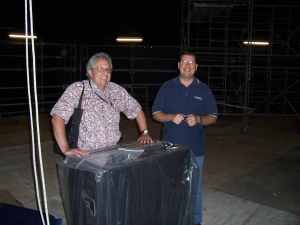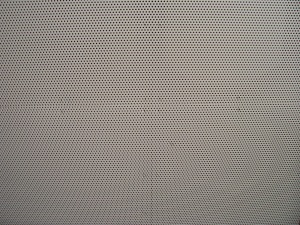Hi, and welcome to the bi-weekly issue of Fulldome production news.
This may be a bit more technical than your average blog because it is intended for students and individuals who are interested in creating for a dome.
The “Democratization’ that has taken place over the last few years has taken what was a exclusive and expensive vocation – film making – and changed it in a similar fashion to the desk top publishing revolution some years before. relatively inexpensive digital non-linear editing tool, compositing tools, even CGI platforms that are completely FREE have changed the nature of film making. Now that revolution has come to the Fulldome world.
Today I have many links and references to Fulldome resources. and a special invitation to see and hear the first results of the recent invitation to create for our dome.
FIRST – SOME ADDITIONAL REFERENCES NOT ON THE ORIGINAL EMAIL ( Sorry to yell )
Video panoramas
a site for the hemispherically obsessed
Arts lab – I don’t know how I missed this before
A great company of Fulldome creators
Here is a good talk from Michael Daut, Director of Show Production/Marketing at Evans and Sutherland.
The talk was held at IMERSA, a major player in organizing Fulldome producers and venues.
http://www.fddb.org/fulldome-production-pipeline-by-micheal-daut/
Michaels talk is featured on the Fulldome database site: a good source of information about shows, tools and events.
http://www.fddb.org/
DOMEMASTER Photoshop action pack – I can’t wait to try these out!
http://www.fddb.org/domemaster-photoshop-actions-pack-overview-video/
STANDARDS “We love standards – that’s why we have so many of them!” JY
IMERSA: “Celebrating and promoting immersive digital experiences for education and entertainment in planetariums, schools, museums and attractions”.
http://imersa.org/
Fulldome STANDARDS
http://imersa.org/standards
And so, here are MORE standards – even more stringent – but don’t be dismayed if your dome is less than 60 feet or you have less than 16 audio channels… These are LARGE screen standards.
http://www.whiteoakinstitute.org/digss_1.0.pdf
From the planetarium world
Here are a few good articles on Fulldome production in the Western Alliance of planetariums newsletter.
http://www.wacdomes.org/gwoarchive/GWO2013-03.pdf
Excellent astronomy visualization/planetarium software – the flat screen version is free, fish-eye/dome is not so free.
http://www.nightshadesoftware.org/projects/nightshade
Finally, the most amazing news – Dr. Joseph Waters Film Composition class at SDSU picked up the gauntlet we threw down at the Immersive Dome Theater Showcase we presented here on February 27th. I have 18 student videos to be presented on April 19th in the Heikoff Dome Theater. 45 minutes of material!
Think about it – in a bit more then a month his students used many of the Fulldome tricks I presented at the event. I also sent out some more detailed instructions, and they have really run with this thing. If you want the Fulldome production materials just let me know! (on-line soon).
I have long admired the talented David Beining and his yearly Domefest event, especially his association with the NMSU students and now we have our own version of this long running event here.
We screening part of domefest 2012 recently, and will do so again. Unfortunately, these are not public screenings, unless a huge groundswell of requests arrive…
Learn about Dr. Waters here:
http://music.sdsu.edu/newsite/index.php/faculty_bios/waters and here http://www.josephwaters.com/
You might want to attend Dr. Waters event the New West Electronic Arts and Music festival on the 26th and 27th of this month (2012!) too
Next year we will hold this amazing, original content event at the Fleet on the 23rd of March, and the day before it will be at the Hillcrest First Unitarian Church.
http://www.nweamo.com/
John Young
Reuben H. Fleet Science Center
(619) 685-5731
Filed under: Uncategorized | Tagged: full dome, fulldome, org standards, photoshop actions, planetarium, production pipeline, scientific visualization, video panoramas | Leave a comment »






















